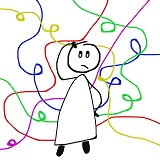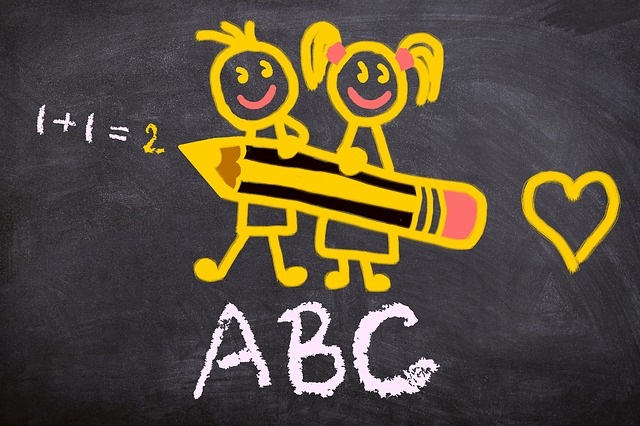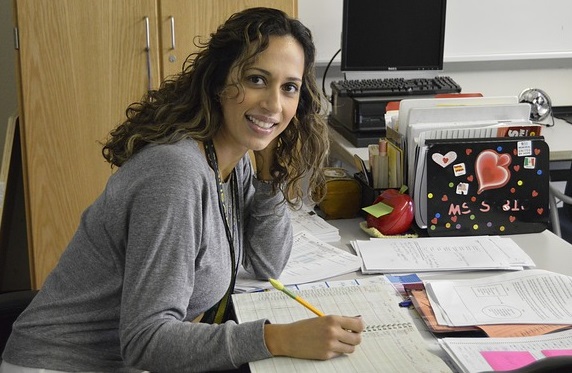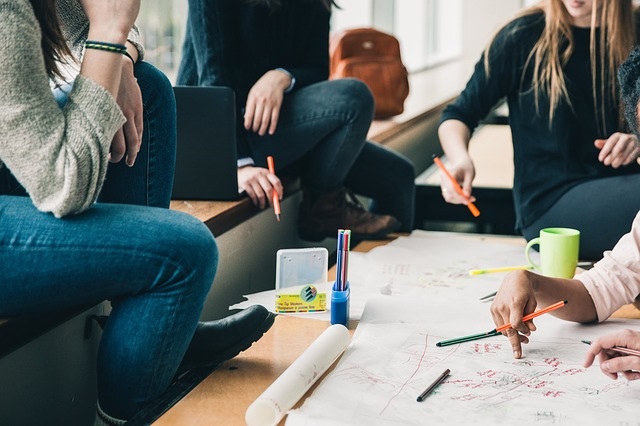Teacher Education through School based Support (TESS)-India
The content in this chapter is an excerpt from:
Contents
- Planning lessons
- Involving all
- Talk for learning
- Using pair work
- Using questioning to promote thinking
- Monitoring and giving feedback
- Using group work
- Assessing progress and performance
- Using local resources
- Storytelling, songs, role play and drama
1. Planning lessons
Why planning and preparing are important
- being clear about what your students need in order to make progress
- deciding how you are going to teach in a way that students will understand and how to maintain flexibility to respond to what you find
- looking back on how well the lesson went and what your students have learned in order to plan for the future
Planning a unit of lessons
- what you want the students to learn
- how you will introduce that learning
- what students will have to do and why
Preparing individual lessons
1 – The introduction
2 – The main part of the lesson
3 – The end of the lesson to check on learning
Reviewing lessons
- change or vary the activities
- prepare a range of open and closed questions
- have a follow-up session with students who need extra support
respond flexibly to what you find out about your students’ actual learning.
2. Involving all
What does it mean to ‘involve all’?
Three key principles to ensure you involve all in learning
- Noticing: Effective teachers are observant, perceptive and sensitive; they notice changes in their students. If you are observant, you will notice when a student does something well, when they need help and how they relate to others. You may also perceive changes in your students, which might reflect changes in their home circumstances or other issues. Involving all requires that you notice your students on a daily basis, paying particular attention to students who may feel marginalized or unable to participate.
- Focus on self-esteem: Good citizens are the ones who are comfortable with who they are. They have self-esteem, know their own strengths and weaknesses, and have the ability to form positive relationships with other people, regardless of background. They respect themselves and they respect others. As a teacher, you can have a significant impact on a young person’s self-esteem; be aware of that power and use it to build the self-esteem of every student.
- Flexibility: If something is not working in your classroom for specific students, groups or individuals, be prepared to change your plans or stop an activity. Being flexible will enable you to make adjustments so that you involve all students more effectively.
Approaches you can use all the time
- Modeling good behavior:Be an example to your students by treating them all well, regardless of ethnic group, religion or gender. Treat all students with respect and make it clear through your teaching that you value all students equally. Talk to them all respectfully, take account of their opinions when appropriate and encourage them to take responsibility for the classroom by taking on tasks that will benefit everyone.
- High expectations:Ability is not fixed; all students can learn and progress if supported appropriately. If a student finds it difficult to understand the work you are doing in class, then do not assume that they cannot ever understand. Your role as the teacher is to work out how best to help each student learn. If you have high expectations of everyone in your class, your students are more likely to assume that they will learn if they persevere. High expectations should also apply to behavior. Make sure the expectations are clear and that students treat each other with respect.
- Build variety into your teaching: Students learn in different ways. Some students like to write; others prefer to draw mind maps or pictures to represent their ideas. Some students are good listeners; some learn best when they get the opportunity to talk about their ideas. You cannot suit all the students all the time, but you can build variety into your teaching and offer students a choice about some of the learning activities that they undertake.
- Relate the learning to everyday life: For some students, what you are asking them to learn appears to be irrelevant to their everyday lives. You can address this by making sure that whenever possible, you relate the learning to a context that is relevant to them and that you draw on examples from their own experience.
- Use of language:Think carefully about the language you use. Use positive language and praise, and do not ridicule students. Always comment on their behavior and not on them. ‘You are annoying me today’ is very personal and can be better expressed as ‘I am finding your behavior annoying today’ or ‘Is there any reason you are finding it difficult to concentrate?’, which is much more helpful.
- Challenge stereotypes: Find and use resources that show girls in non-stereotypical roles or invite female role models to visit the school, such as scientists. Try to be aware of your own gender stereotyping; you may know that girls play sports and that boys are caring, but often we express this differently, mainly because that is the way we are used to talking in society.
- Create a safe, welcoming learning environment: All students need to feel safe and welcome at school. You are in a position to make your students feel welcome by encouraging mutually respectful and friendly behavior from everyone. Think about how the school and classroom might appear and feel like to different students. Think about where they should be asked to sit and make sure that any students with visual or hearing impairments, or physical disabilities, sit where they can access the lesson. Check that those who are shy or easily distracted are where you can easily include them.
Specific teaching approaches
involve all students. These are described in more detail in other chapters, but a brief introduction is given here:
- Questioning: If you invite students to put their hands up, the same people tend to answer. There are other ways to involve more students in thinking about the answers and responding to questions. You can direct questions to specific people. Tell the class you will decide who answers, then ask people at the back and sides of the room, rather than those sitting at the front. Give students ‘thinking time’ and invite contributions from specific people. Use pair or group work to build confidence so that you can involve everyone in whole-class discussions.
- Assessment: Develop a range of techniques for formative assessment that will help you to know each student well. You need to be creative to uncover hidden talents and shortfalls. Formative assessment will give you accurate information rather than assumptions that can easily be drawn from generalized views about certain students and their abilities. You will then be in a good position to respond to their individual needs.
- Group work and pair work: Think carefully about how to divide your class into groups or how to make up pairs, taking account of the goal to include all and encourage students to value each other. Ensure that all students have the opportunity to learn from each other and build their confidence in what they know. Some students will have the confidence to express their ideas and ask questions in a small group, but not in front of the whole class.
- Differentiation: Setting different tasks for different groups will help students start from where they are and move forward. Setting open-ended tasks will give all students the opportunity to succeed. Offering students, a choice of task helps them to feel ownership of their work and to take responsibility for their own learning. Taking account of individual learning needs is difficult, especially in a large class, but by using a variety of tasks and activities it can be done.

3. Talk for learning
Why talk for learning is important
- those ideas are explored
- reasoning is developed and organized as such, so students learn more
Planning talk for learning activities in the classroom
Building on students’ talk
- listen to what students say
- appreciate and build on students’ ideas
- encourage the students to take it further
Encourage students to ask questions themselves
- entitle a section of your lesson ‘Hands up if you have a question’
- put a student in the hot-seat and encourage the other students to question that student as if they were a character, e.g. Pythagoras or Mirabai
- play a ‘Tell Me More’ game in pairs or small groups
- give students a question grid with who/what/where/when/why questions to practice basic inquiry
- give the students some data (such as the data available from the World Data Bank, e.g. the percentage of children in full-time education or exclusive breastfeeding rates for different countries), and ask them to think of questions you could ask about this data design a question wall listing the students’ questions of the week.
4. Using pair work
Why use pair work?
Tasks for pair work
Pair work tasks could include:
- ‘Think–pair–share’: Students think about a problem or issue themselves and then work in pairs to work out possible answers before sharing their answers with other students. This could be used for spelling, working through calculations, putting things in categories or in order, giving different viewpoints, pretending to be characters from a story, and so on.
- Sharing information: Half the class is given information on one aspect of a topic; the other half is given information on a different aspect of the topic. They then work in pairs to share their information in order to solve a problem or come to a decision.
- Practicing skills such as listening: One student could read a story and the other, ask questions; one student could read a passage in English, while the other tries to write it down; one student could describe a picture or diagram while the other student tries to draw it based on the description.
- Following instructions: One student could read instructions for the other student to complete a task.
- Storytelling or role play: Students could work in pairs to create a story or a piece of dialogue in a language that they are learning.
 Managing pairs to include all
Managing pairs to include all
- Manage the pairs that the students work in. Sometimes students will work in friendship pairs; sometimes they will not. Make sure they understand that you will decide the pairs to help them maximize their learning.
- To create more of a challenge, sometimes you could pair students of mixed ability and different languages together so that they can help each other; at other times, you could pair students working at the same level.
- Keep records so that you know your students’ abilities and can pair them together accordingly.
- At the start, explain the benefits of pair work to the students, using examples from family and community contexts where people collaborate.
- Keep initial tasks, brief and clear.
- Monitor the student pairs to make sure that they are working as you want.
- Give students roles or responsibilities in their pair, such as two characters from a story, or simple labels such as ‘1’ and ‘2’, or ‘As’ and ‘ Bs’). Do this before they move to face each other so that they listen.
- Make sure that students can turn or move easily to sit facing each other.
 5. Using questioning to promote thinking
5. Using questioning to promote thinking
Of the questions posed, 60 percent recalled facts and 20 per cent were procedural (Hattie, 2012), with most answers being either right or wrong. But does simply asking questions that are either right or wrong promote learning?
- Guide students toward understanding when a new topic or material is introduced
- Push students to do a greater share of their thinking
- Remediate an error
- Stretch students
- Check for understanding.
Questioning is generally used to find out what students know, so it is important in assessing their progress. Questions can also be used to inspire, extend students’ thinking skills and develop inquiring minds. They can be divided into two broad categories:
- Lower-order questions, which involve the recall of facts and knowledge previously taught, often involving closed questions (a yes or no answer).
- Higher-order questions, which require more thinking. They may ask the students to put together information previously learnt to form an answer or to support an argument in a logical manner. Higher-order questions are often more open-ended.
Open-ended questions encourage students to think beyond textbook-based, literal answers, thus eliciting a range of responses. They also help the teacher to assess the students’ understanding of content.
Encouraging students to respond
- the length of students’ responses
- the number of students offering responses
- the frequency of students’ questions
- the number of responses from less capable students
- positive interactions between students.
 Your response matters
Your response matters
- Pick out the parts of the answers that are correct and ask the student in a supportive way to think a bit more about their answer. This encourages more active participation and helps your students to learn from their mistakes. The following comment shows how you might respond to an incorrect answer in a supportive way: ‘You were right about evaporation forming clouds, but I think we need to explore a bit more about what you said about rain. Can anyone else offer some ideas?’
- Write on the blackboard all the answers that the students give, and then ask the students to think about them all. What answers do they think are right? What might have led to another answer being given? This gives you an opportunity to understand the way that your students are thinking and also gives your students an unthreatening way to correct any misconceptions that they may have.
Value all responses by listening carefully and asking the student to explain further. If you ask for further explanation for all answers, right or wrong, students will often correct any mistakes for themselves, you will develop a thinking classroom and you will really know what learning your students have done and how to proceed. If the wrong answers result in humiliation or punishment, then your students will stop trying for fear of further embarrassment or ridicule.
Improving the quality of responses
- a how or a why
- another way to answer
- a better word
- evidence to substantiate an answer
- integration of a related skill
- application of the same skill or logic in a new setting.
- Prompting requires appropriate hints to be given – ones that help students develop and improve their answers. You might first choose to say what is right in the answer and then offer information, further questions and other clues. (‘So what would happen if you added a weight to the end of your paper airplane?’)
- Probing is about trying to find out more, helping students to clarify what they are trying to say to improve a disorganized answer or one that is partly right. (‘So what more can you tell me about how this fits together?’)
- Refocusing is about building on correct answers to link students’ knowledge to the knowledge that they have previously learned. This broadens their understanding. (‘What you have said is correct, but how does it link with what we were looking at last week in our local environment topic?’)
- Sequencing questions means asking questions in an order designed to extend thinking. Questions should lead students to summarize, compare, explain or analyze. Prepare questions that stretch students, but do not challenge them so far that they lose the meaning of the questions. (‘Explain how you overcame your earlier problem. What difference did that make? What do you think you need to tackle next?’)
- Listening enables you to not just look for the answer you are expecting, but to alert you to unusual or innovative answers that you may not have expected. It also shows that you value the students’ thinking and therefore they are more likely to give thoughtful responses. Such answers could highlight misconceptions that need correcting, or they may show a new approach that you had not considered. (‘I hadn’t thought of that. Tell me more about why you think that way.’)
Remember, questioning is not about what the teacher knows, but about what the students know. It is important to remember that you should never answer your own questions! After all, if the students know you will give them the answers after a few seconds of silence, what is their incentive to answer?
www.tes.co.uk/article.aspx?storycode=381755 (accessed 22 September 2014).
6. Monitoring and giving feedback
Monitoring
- be more aware of their performance and more responsible for their learning
- improve their learning
- predict achievement on state and local standardized tests
- achieve higher grades
- when to ask a question, or give a prompt
- when to praise
- whether to challenge
- how to include different groups of students in a task what to do about mistakes
Listening to and observing students
- listen to your students reading aloud
- Listen to discussions in pair or group work
- observe students using resources outdoors or in the classroom observe the body language of groups as they work
Giving feedback
- information about what happened
- an evaluation of how well the action or task was performed guidance as to how their performance can be improved
- what they can actually do
- what they cannot do yet
- how their work compares with that of others how they can improve
- focused on the task being undertaken and the learning that the student needs to do
- clear and honest, telling the student what is good about their learning as well as what requires improvement
- actionable, telling the student to do something that they are able to do
- given in appropriate language that the student can understand
- given at the right time – if it’s given too soon, the student will think ‘I was just going to do that!’; too late, and the student’s focus will have moved elsewhere and they will not want to go back and do what is asked.
Using praise and positive language

Using praise and positive language
Using prompting as well as correction
7. Using group work (aka Cooperative Learning)
The benefits of group work
Planning group work
- the goals and expected outcomes of the group activity
- the time allocated to the activity, including any feedback or summary task
- how to split the groups (how many groups, how many students in each group, criteria for groups)
- how to organize the groups (role of different group members, time required, materials, recording and reporting)
- how any assessment will be undertaken and recorded (take care to distinguish individual assessments from group assessments)
- how you will monitor the groups’ activities
Groupwork tasks
- Presentations: Students work in groups to prepare a presentation for the rest of the class. This works best if each group has a different aspect of the topic, so they are motivated to listen to each other rather than listening to the same topic several times. Be very strict about the time that each group has to present and decide on a set of criteria for a good presentation. Write these on the board before the lesson. Students can the use the criteria to plan their presentation and assess each other’s work. The criteria could include:
- Was the presentation clear?
- Was the presentation well-structured?
- Did I learn something from the presentation?
- Did the presentation make me think?
- Problem solving: Students work in groups to solve a problem or a series of problems. This could include conducting an experiment in science, solving problems in mathematics, analyzing a story or poem in English, or analyzing evidence in history.
- Creating an artifact or product: Students work in groups to develop a story, a piece of drama, a piece of music, a model to explain a concept, a news report on an issue or a poster to summarize information or explain a concept. Giving groups five minutes at the start of a new topic to create a brainstorm or mind map will tell you a great deal about what they already know, and will help you pitch the lesson at an appropriate level.
- Differentiated tasks: Group work is an opportunity to allow students of different ages or attainment levels to work together on an appropriate task. Higher attainers can benefit from the opportunity to explain the work, whereas lower attainers may find it easier to ask questions in a group than in a class, and will learn from their classmates.
- Discussion: Students consider an issue and come to a conclusion. This may require quite a bit of preparation on your part in order to make sure that the students have enough knowledge to consider different options, but organizing a discussion or debate can be very rewarding for both you and them.
Organizing groups
- Decide how and why you will divide students into groups; for example, you may divide groups by friendship, interest or by similar or mixed attainment. Experiment with different ways and review what works best with each class.
- Plan any roles you will give to group members (for example, note taker, spokesperson, timekeeper or collector of equipment), and how you will make this clear.
Managing group work
- Direct your students to the groups they will work on according to your plan, perhaps designating areas in the classroom where they will work or giving instructions about moving any furniture or school bags
- Be very clear about the task and write it on the board in short instructions or pictures. Allow your students to ask questions before you start.
- ‘Expert groups’: Give each group a different task, such as researching one way of generating electricity or developing a character for a drama. After a suitable time, re-organize the groups so that each new group is made up of one ‘expert’ from all the original groups. Then give them a task that involves collating knowledge from all the experts, such as deciding on what sort of power station to build or preparing a piece of drama.
- ‘Envoys’: If the task involves creating something or solving a problem, after a while, ask each group to send an envoy to another group. They could compare ideas or solutions to the problem and then report back to their own group. In this way, groups can learn from each other.
- are resistant to active learning and do not engage
- are dominant
- do not participate due to poor interpersonal skills or lack of confidence
8. Assessing progress and performance
- Summative assessment looks back and makes a judgement on what has already been learnt. It is often conducted in the form of tests that are graded, telling students their attainment on the questions in that test. This also helps in reporting outcomes.
- Formative assessment (or assessment for learning) is quite different, being more informal and diagnostic in nature. Teachers use it as part of the learning process, for example questioning to check whether students have understood something. The outcomes of this assessment are then used to change the next learning experience. Monitoring and feedback are part of formative assessment.
- Understand what they are expected to learn
- Know where they are now with that learning
- Understand how they can make progress (that is, what to study and how to study) and know when they have reached the goals and expected outcomes.
- Before: Assessing before the teaching begins can help you identify what the students know and can do prior to instruction. It determines the baseline and gives you a starting point for planning your teaching. Enhancing your understanding of what your students know reduces the chance of reteaching the students something they have already mastered or omitting something they possibly should (but do not yet) know or understand.
- During: Assessing during classroom teaching involves checking if students are learning and improving. This will help you make adjustments in your teaching methodology, resources and activities. It will help you understand how the student is progressing towards the desired objective and how successful your teaching is.
- After: Assessment that occurs after teaching confirms what students have learnt and shows you who has learnt and who still needs support. This will allow you to assess the effectiveness of your teaching goal.
Before: being clear about what your students will learn
Before: knowing where students are in their learning
- Ask the students to work in pairs to make a mind map or list of what they already know about that topic, giving them enough time to complete it but not too long for those with few ideas. You should then review the mind maps or lists.
- Write the important vocabulary on the board and ask for volunteers to say what they know about each word. Then ask the rest of the class to put their thumbs up if they understand the word, thumbs down if they know very little or nothing, and thumbs horizontal if they know something.
During: ensuring students’ progress in learning
- helping students know their strengths and how they might further improve
- being clear about what needs further development
- being positive about how they might develop their learning, checking that they understand and feel able to use the advice.
- go back over some work that you thought they knew already
- group students according to needs, giving them differentiated tasks
- encourage students to decide for themselves which of several resources they need to study so that they can ‘fill their own gap’
- use ‘low entry, high ceiling’ tasks so that all students can make progress – these are designed so that all students can start the task but the more able ones are not restricted and can progress to extend their learning.
After: collecting and interpreting evidence, and planning ahead
- find out how well your students are doing
- use this to inform your planning for the next lesson
- feed it back to students
Collecting information or evidence
- Collect information from a variety of sources – from your own experience, the student, other students, other teachers, parents and community members.
- Assess students individually, in pairs and in groups, and promote self-assessment. Using different methods is important, as no single method can provide all the information you need. Different ways of collecting information about the students’ learning and progress include observing, listening, discussing topics and themes, and reviewing written class and homework.
Recording
- noting down what you observe while teaching–learning is going on in a diary/notebook/register
- keeping samples of students’ work (written, art, craft, projects, poems, etc.) in a portfolio
- preparing every student’s profile
- noting down any unusual incidents, changes, problems, strengths and learning evidences of students
Interpreting the evidence
Planning for improvement
9. Using local resources
Making the most of your classroom
- make posters from old magazines and brochures
- bring in objects and artifacts related to the current topic
- display your students’ work
- change the classroom displays to keep students curious and prompt new learning
Using local experts in your classroom
Using the outside environment
- estimating and measuring distances
- demonstrating that every point on a circle is the same distance from the central point
- recording the length of shadows at different times of the day
- reading signs and instructions
- conducting interviews and surveys
- locating solar panels
- monitoring crop growth and rainfall
Adapting resources
10. Storytelling, songs, role play and drama
Storytelling
- be entertaining, exciting and stimulating
- take us from everyday life into fantasy worlds
- be challenging
- stimulate thinking about new ideas
- help explore feelings
- help to think through problems in a context that is detached from reality and therefore less threatening
Songs
Role play
- explores real-life situations to develop understandings of other people’s feelings
- promotes development of decision making skills
- actively engages students in learning and enables all students to make a contribution
- promotes a higher level of thinking.
Drama





 Managing pairs to include all
Managing pairs to include all 5. Using questioning to promote thinking
5. Using questioning to promote thinking Your response matters
Your response matters





